Dear Readers, Hardly any superfood is currently as popular as quinoa.
And not without reason. The “grain of the Incas” not only tastes delicious, but it is also rich in vital nutrients.
Here you can find out how quinoa works, what risks you have to consider, and what you should consider when buying it.
What quinoa actually is
Its tiny seeds, which we know as quinoa, have triggered a real hype in Europe and America.
It was even awarded “Plant of the Year 2013”.
And with good reason: quinoa is a valuable source of protein, contains all nine essential amino acids, and is full of vital nutrients.
Quinoa benefits were completely unknown in Europe until a few decades ago. In South America, on the other hand, it has been one of the most important staple foods for 6,000 years.
It is not without reason that it is also often referred to as “Inca rice”. However, Spanish conquerors considered the small seeds to be poor people’s food and even partially banned their consumption.
Today you can find Inca rice in health food stores, supermarkets, and drugstores. The small grains are so popular mainly because they can be prepared and served like rice or cereal dishes.
However, unlike pasta, there is no gluten in quinoa, making it the perfect side dish for those with gluten intolerance. Just like amaranth, the Inca rice is therefore referred to as pseudo or pseudo-grain.
In addition, both plant genera belong to the foxtail family. This makes them particularly closely related to spinach and turnips.
By the way, you can eat not only the small seeds of the plant but also its leaves.
Components of quinoa
The Incas could hardly have chosen a better staple food.
Quinoa benefits have a full spectrum of essential amino acids.
The human body cannot produce these building blocks itself. He is therefore dependent on a regular supply of food.
In addition, Inca rice contains a considerable amount of vitamin E and iron. Quinoa has a twice as high content of important nutrients as, for example, wheat.
But protein and calcium are also found in high concentrations in bogus grain. Calcium is particularly important for strong bones and healthy bone growth in young children.
Manganese and copper in quinoa are also important for your health. Copper, for example, plays a crucial role in protecting mitochondria.
Inca rice is also valued for its high magnesium and unsaturated fatty acid content. On the one hand, just 100 grams of cooked grains per day cover one-third of the magnesium requirement.
On the other hand, the pseudo-grain consists of 50 percent polyunsaturated fatty acids, which take on a multitude of important functions in the body.
Nutritional values of quinoa
In the nutritional value table, you can see the most important ingredients of the pseudo-grain from the Andes at a glance.
They all refer to uncooked quinoa.
Quinoa and low carb
If you want to eat low carb, reduce the proportion of carbohydrates in your diet to a minimum.
However, this is often difficult.
Mainly because carbohydrates usually make up the majority of the macronutrients ingested through food.
Unfortunately, Quinoa benefits are also not suitable for this type of diet change.
With around 400 calories per 100 grams, the small seeds are extremely rich in energy. Carbohydrates account for most of this energy.
These are at least so complex that they have a health-promoting effect. Nevertheless, the popular pseudo-cereal is therefore not suitable for a low-carbohydrate diet.
Health benefits of quinoa
Quinoa has many important nutrients. They can all have a health-promoting effect on you.
The pseudo-grain is an ideal alternative, especially for allergy sufferers.
But not only for them: Inca rice is considered alkaline, which is why it is said to have a deacidifying effect.
In the following, we will explain the healthy effects of quinoa to you.
For a gluten-free diet
As the name suggests, quinoa is not a real grain.
In contrast to wheat, rye, and co., it has no gluten and is not one of the sweet grasses.
This is why quinoa can be so valuable, especially for people with celiac disease or other intolerances.
An intolerance usually manifests itself in flatulence, diarrhea, or constipation.
The reason for this is the so-called “glutinous protein” contained in the grain, gluten, which triggers a misguided immune reaction in the body.
Quinoa can be a great substitute for pasta or other cereal-based foods. However, it is not suitable for baking.
Above all, the property that makes gluten so popular is that the mixture “sticks together”. The pseudo-grain lacks this property, which is why the dough cannot be airy and fluffy.
Supports weight loss
Quinoa benefits have neither low in carbohydrates nor low in energy. Nevertheless, Inca rice can have a beneficial effect on the scales when dieting.
Roughly eight percent of carbohydrates come from dietary fiber.
And it is precisely these that can be metabolized particularly well.
The complex dietary fibers must first be broken down in the body in a laborious process.
As a result, they only enter the blood sugar very slowly and accordingly, keep it constant. The consequences: no ravenous hunger attacks, a longer feeling of satiety, and a boosted digestive tract.
Because the blood sugar level hardly rises, quinoa is not only suitable for diets but also for diabetics.
But the superfood can also help with intestinal problems or constipation. The roughage swells up in the stomach and thereby increases its volume.
The increased volume in turn gently stimulates digestion.
Against migraines and headaches
Headaches and migraines can be extremely painful for sufferers, especially if they occur regularly.
The often stabbing, pulsating, or throbbing pain can be a result of vasoconstriction, among other things.
The magnesium contained in quinoa supports the relaxation of the blood vessels.
This in turn reduces the intensity of the headache significantly. In studies, numerous migraine patients report rapid improvements.
The reason for the relief of migraines could also be the vitamin B2 contained in Inca rice.
The B vitamin, also known as riboflavin, ensures stable energy production in the cells. And of course also for an improved energy supply of the brain cells.
In addition, riboflavin participates in the production of red blood cells, which contribute significantly to the oxygen supply to the body’s cells.
Studies using riboflavin to relieve migraines have proven this effectiveness.
Therefore, it stands to reason that both riboflavin and the high amount of magnesium in quinoa can help prevent migraines and headaches.
For a good mood
Quinoa benefits won’t instantly lighten a gloomy mood.
However, it could be that regular consumption actually lifts the mood for a long time.
The reason for this is the amino acid tryptophan.
It plays a crucial role in the production of serotonin a happy hormone.
Serotonin is particularly important for healthy and good sleep, appetite, and reduced pain perception.
Unfortunately, a vicious circle often arises here: those who sleep poorly are less rested and less satisfied, and more susceptible to stress. More stress makes you restless and your appetite decreases.
So when the body produces enough serotonin, it suffers less from depression, upset moods, and dissatisfaction. To support your serotonin production, quinoa is definitely recommended.
For vegans and vegetarians
A purely plant-based diet can be very healthy and balanced.
Nevertheless, there are sometimes deficiency symptoms with a vegan or vegetarian diet.
With around 3mg of iron per 100 grams of quinoa, the pseudocereal helps to prevent or even eliminate iron deficiency.
In addition, there is significantly more calcium in the valuable Inca rice than in wheat, for example.
The mineral, which is often found in whey products, is extremely important for healthy and strong bones.
In addition, Quinoa benefits provide the body with all the essential amino acids and important vitamins.
Especially for athletes who eat vegan or vegetarian, the Inca rice is a great enrichment, which can also provide a lot of energy.
Risks of Quinoa
Quinoa benefits are primarily health-promoting.
But with every food, there is always a small catch that you should keep in mind.
It is therefore very important that you consume consciously and that you eat a balanced and regional diet.
Saponins
To protect against pests, Quinoa benefits from seed coats containing saponins.
However, these substances are also harmful to the human organism because they attack the intestinal mucosa and blood cells.
Because of the harmful saponins, the seeds should never be eaten unpeeled. Since commercial quinoa is generally only offered peeled, this is not difficult.
Nevertheless, residues of the pollutants could still be in the grains. So to completely eliminate the danger of saponins, you should wash the grains thoroughly before use.
Saponins can have negative effects, especially on small children. Their intestinal mucous membranes are not yet fully formed and the immune system is not as mature as in adults.
Buy quinoa
There are over a hundred different varieties of quinoa, all of which vary in flavor, color, and nutritional content.
The good news is that only a few varieties make it onto the supermarket shelves. Therefore, the selection is not too huge.
Nevertheless, you can choose between these varieties:
1. White: The seeds with a white-yellowish color are the most common and can be found in almost every store.
The light variant is usually cheaper than the other varieties and also contains less fat. White quinoa tastes slightly nutty.
2. Black: The darkest variant of the Inca rice is in no way inferior to the conventional kind. Black Inka rice has a much nuttier flavor and is more al dente than its relative.
In addition, this variety needs to be cooked longer.
3. Red: Even the variety with a reddish-brown color has a delicious nutty taste and an extraordinary appearance.
This variety also needs to be cooked longer and is quite firm to the bite. Because of its beautiful red color, this quinoa is particularly popular in salads and fillings.
4. Puffed: Similar to popcorn, quinoa can be “puffed” in a specific process. Due to further processing, this product is more expensive than the pure variants.
The puffed grains taste particularly delicious in muesli, muesli bars, or yogurt.
Depending on the variety, their nutrient content also differs, but usually only by a minimum. In general, the darker varieties are higher in calories.
You can find fair-trade and high-quality products primarily in health food stores, natural food, and organic shops, and in drugstores.
Cook and prepare quinoa
It is not without reason that quinoa is also called “pseudo-grain” and “inca rice”.
You can prepare small seeds just like the popular side dishes rice or pasta.
You can combine them as usual with vegetables, meat or fish.
Before you cook quinoa, you should wash the seeds thoroughly in a colander. This is the only way to guarantee that all harmful substances have been flushed out of the seeds.
After rinsing, put the grains in a pot with twice the amount of water. Bring this to a boil and only add salt or vegetable broth as soon as the water begins to boil.
Once the water has briefly boiled, let it simmer for about 10 to 15 minutes at a low temperature. Then you take the pot off the stove and let the grains swell for another 10 minutes.
Finally, you can season the finished Inca rice with salt, pepper, and herbs. Quinoa also tastes wonderful with butter or vegetable oils.
Puffed Quinoa: A Recipe
You can either buy puffed quinoa in stores or make it yourself at home in just a few steps.
First, you put enough grains in a pot so that the bottom is completely covered.
Add one to two tablespoons of sunflower oil and cover the mixture with a lid.
Now you heat the pot until the grains start popping up one by one.
Just like with the popcorn, it’s now important to toss the pot regularly so that nothing burns. You do this until all the seeds have popped.
Quinoa naturally contains sugar and does not necessarily need to be sweetened. But that can be delicious if you want to add puffed grains to your muesli or use them in homemade muesli bars.
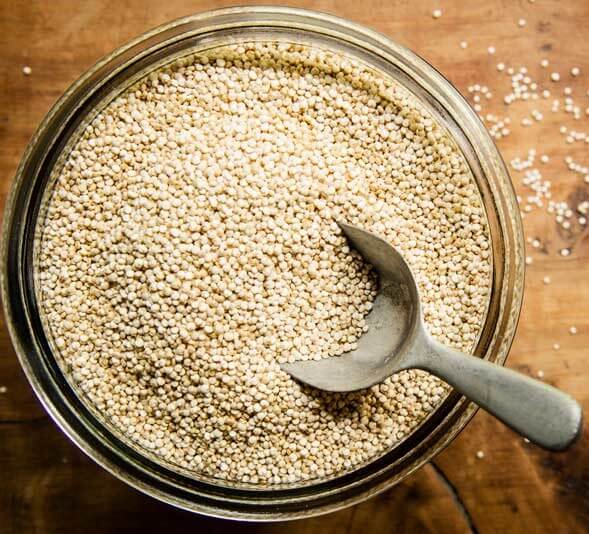
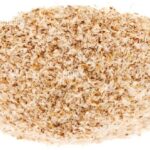

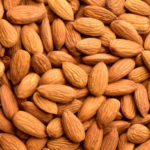
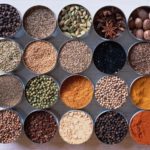
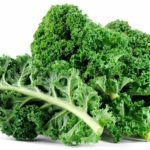
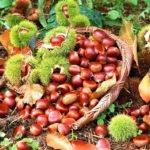
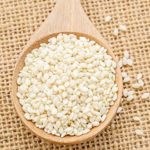
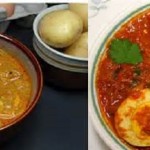
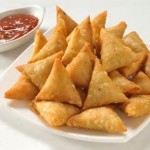


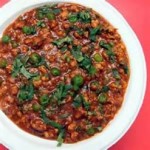
Leave a Reply